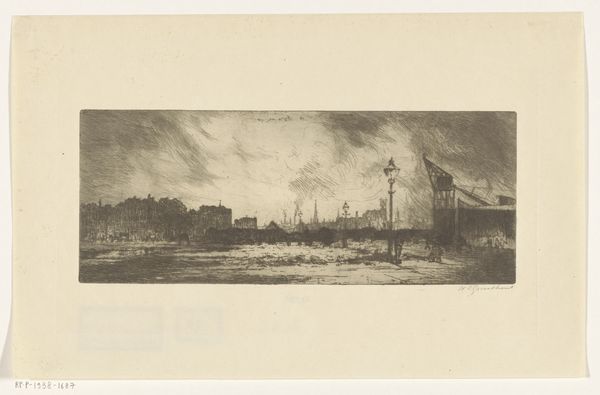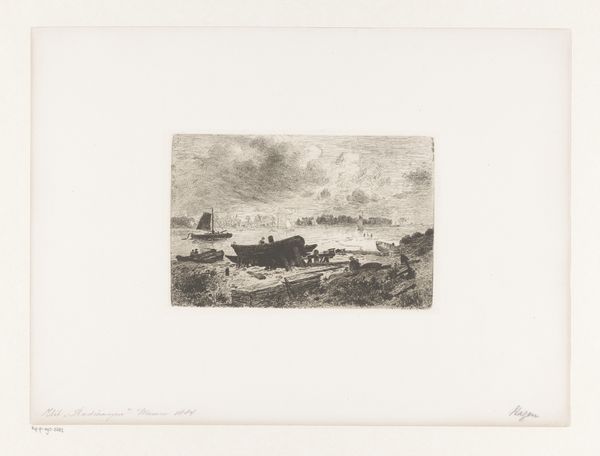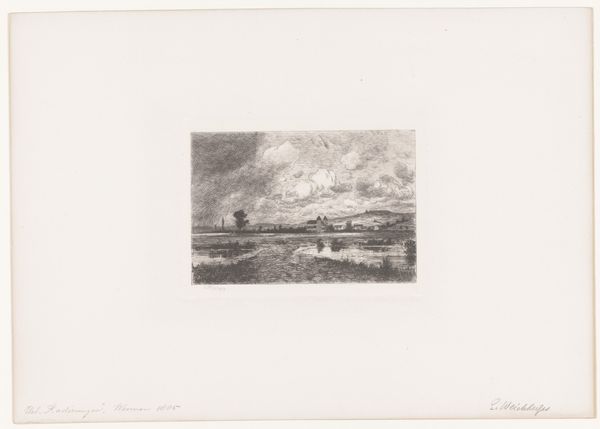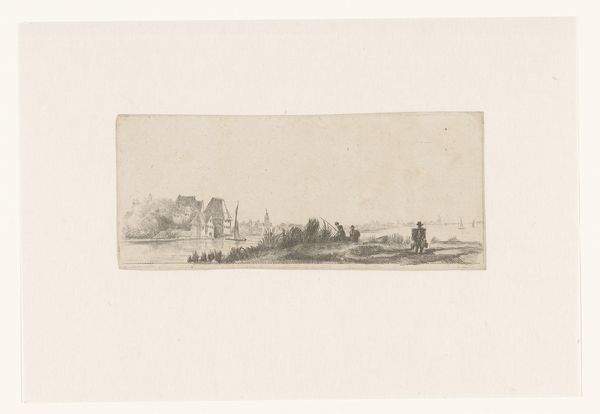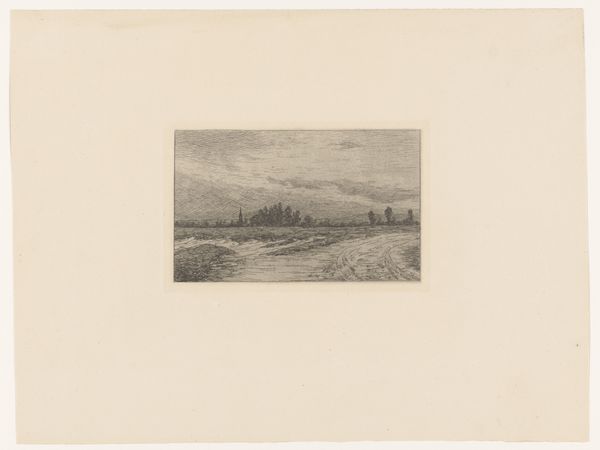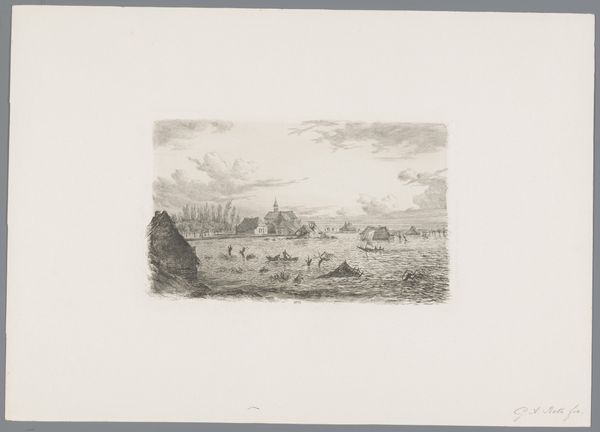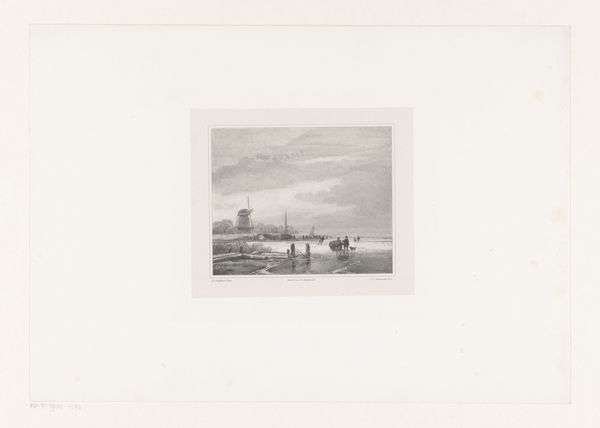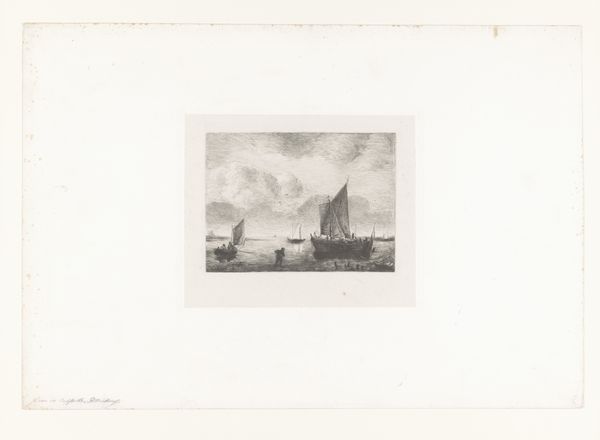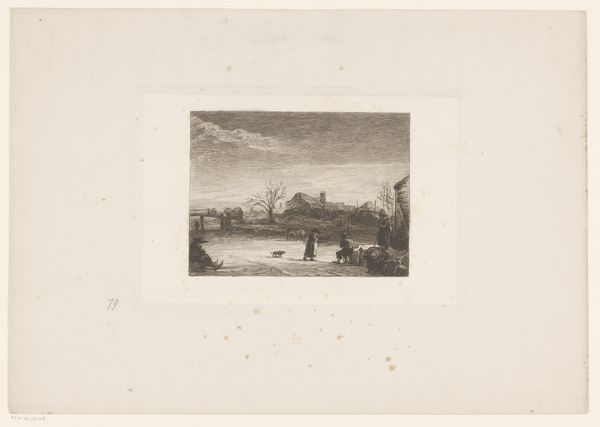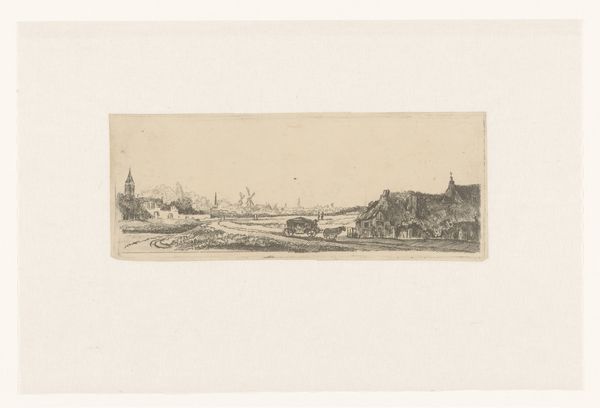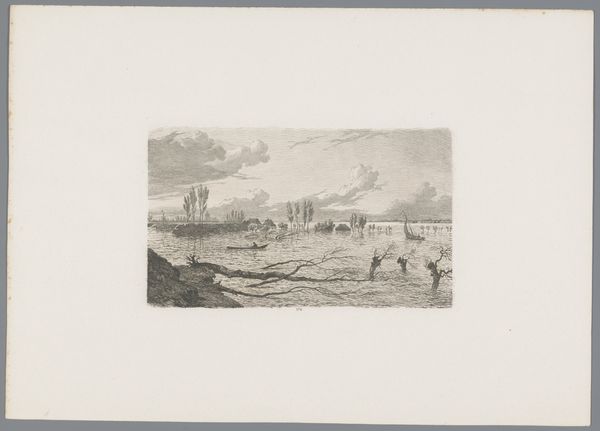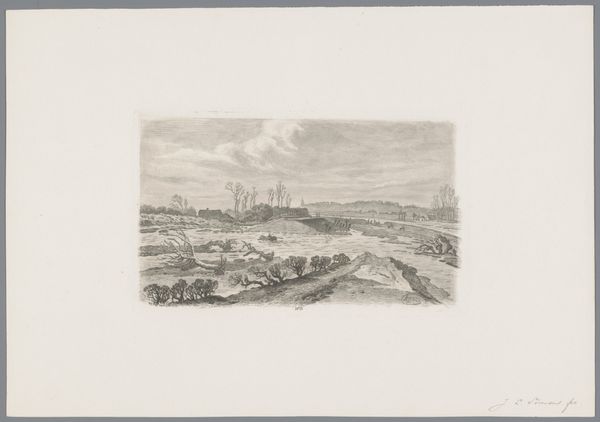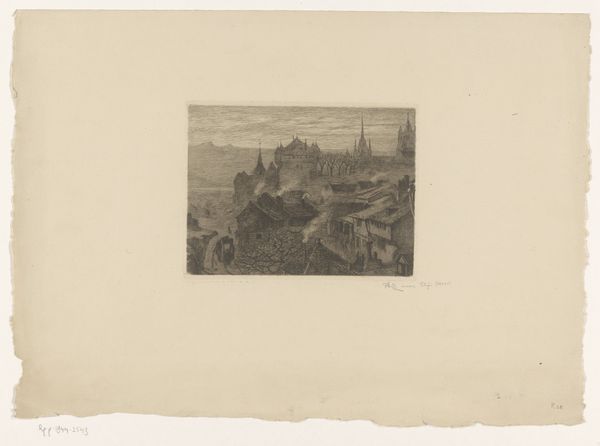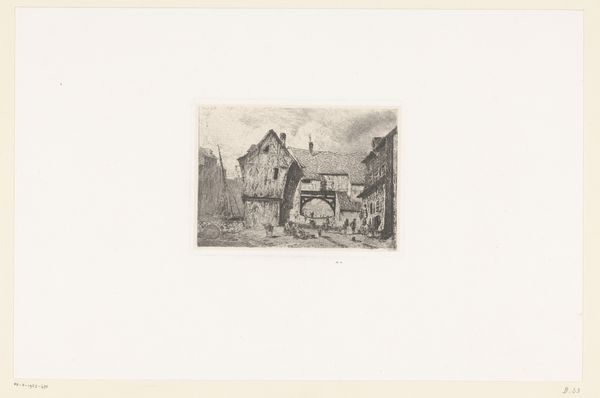
print, etching
# print
#
etching
#
landscape
#
cityscape
#
realism
Dimensions: height 300 mm, width 422 mm
Copyright: Rijks Museum: Open Domain
Editor: Here we have Dirk Jurriaan Sluyter’s "View of Den Bosch", created in 1855, using etching. The subtle tones create such a peaceful, almost melancholic mood. What are your first impressions of its composition? Curator: Observe how the structure meticulously guides the eye. The robust pier in the foreground acts as a stable base, from which our gaze is directed across the water toward the soft, hazy rendering of Den Bosch itself. Notice how the artist plays with depth through linear perspective. Editor: The windmills and buildings in the background almost feel like a dream. Are there any particular details that stand out to you in the etching technique itself? Curator: Indeed, consider the strategic use of hatching and cross-hatching to evoke texture and shadow. Look at the gradations in the sky. The varied line weights effectively create a sense of atmospheric perspective, pushing the city into the distance, which is so consistent. And do note the lines used to define the water compared with the rough texture on the dock, the difference shows just how well he worked the etcher's tools. Editor: So it’s the artist’s formal manipulation of line and tone that really constructs the spatial and emotional effect. I’m also curious how it can be classified as 'realism'? Curator: This claim may appear confusing given it seems the artwork is just depicting an objective and understandable depiction of a scene. Yet look at it’s attention to detail – to the minute representation of the environment, and how he sought out to depict this location without the idealizations or grandstanding that can affect artistic practices, is an effort for him to embrace what can be perceived to be true. Is it objective? No, as it is through Sluyter's eyes we can percieve this all. Yet there is that emphasis of what could really be there if we looked. Editor: So, the 'realism' comes from its emphasis on factual, almost scientific-like observation, rather than purely aesthetic interpretation? This exploration of purely aesthetic concerns are what’s interesting here. Curator: Precisely. We are looking at a specific artistic experience as he experienced them; yet it asks the viewer to see not what they would experience through viewing his painting, yet viewing reality, unadorned.
Comments
No comments
Be the first to comment and join the conversation on the ultimate creative platform.
